Cet article est également disponible en: French
After fifteen years of walking twice a month in the Pyrenees, I think I know what to expect this year on the GR11 (la Senda) in Spain. By 22 June the snow will be relegated to 2800m, well above the highest passes on the walk. Water will be gushing from the base of the ever-shrinking glaciers. Will I even need long trousers, I ask myself. But the ‘once-a-century’ winter of 2012/2013 has changed everything. I pack a fleece, gloves, crampons and an ice-axe.
I realise that I don’t know how to do a self-arrest on ice, so I prepare by watching YouTube videos and practicing secretly when my wife is out of the house – I don’t want to frighten her. I put a fluffy snow-white towel on the bedroom floor and lie on it, ice-axe in hand. I shut my eyes. Suddenly, I’m slipping down an icy slope. I grip the axe tightly, stick the pick end into the towel and, as my speed increases, find myself pulled violently over onto my chest. I raise myself up with the ice-axe firmly implanted in the towel, balancing on my knees so that my crampons don’t stick in and throw me head over heels. It works well. I stop slipping immediately.
The second element of my preparation is to send an email to Phil of Hike Pyrenees. I’ve been following his blog and have worked out that I will pass near to his base. I’d like to meet him, and hope he can give me more information. He does even better. Come and join us for a couple of days, he replies.
Phil is waiting at Sallent de Gállego with four guides and a smile. As there are only five other walkers in the group and the normal ratio is one to six I am reassured. Until I start asking myself: why so many?
The walk starts with introductions and a group photo on a bridge. I inspect the interpretive panel erected on the other side of the bridge by the Aragon government:
“The Pyrenean glaciers constitute the most southerly examples of ice in Europe… the singularity and fragility of these small but immensely beautiful relics of the Ice Age makes them of great scientific, environmental, cultural and landscape interest.”
I am astonished by the next sentence. It appears that the government has found the solution to global warming:
“The glaciers are protected by law No. 2/1990 of 21 March.”
While walking along a well-trodden path through the shady forest, Phil indicates flowers: “Normally on this route people are not that interested. But on the lower level walks they are always asking. I’m compiling a booklet.”
He points warily at a grasilla (Pinguicula vulgaris), a carnivorous plant clinging to a rock.
He is less timid with a wild rose hip. “The locals call that a tapaculo. It’s supposed to cure diarrhoea.” The locals have a sense of humour. Tapa in this context means ‘cork’. He doesn’t need to explain what culo means.
We walkers are a mixed bunch. There are three sporty friends from Guernsey. Claire and Martine have recently climbed the Kilimanjaro but their friend John is more at home on a surfboard or a canoe than on a mountain. Following them is a man with a thick Scottish accent who claims to be a New Zealander, and his wife.
“I left at the age of five months,” Colin explains. “I was on the first ship bringing refugees home, in September 1945. I lived in Scotland until I retired and then went back to New Zealand.”
That makes him nine years older than me, at an age where the years really begin to count. Normally he and his wife walk on spongy Middle Earth tracks on North Island. This will be a challenge, he says.
By the time we arrive at the Respomuso refugio we have crossed several patches of snow. Despite the blazing sun and the date – 24 June, officially summer – we meet two skiers just outside. I had thought that the main problem would be the excessive distances between refugios and the amount of climbing, not the snow. Now I recall that my physiotherapist told me the story of a woman who died in a fall of 300m. She was eaten by the vultures before they could recover her body.
I ask Arkaitz, one of the guides, what’s in store for us.
“No, it isn’t more difficult. You just have to adapt,” he claims.
“When you do your guide training,” Hannah adds, “they note how well you adjust to the situation. You can’t just say ‘I did it like this last time, so I’ll do it the same way again.’”
“How many guides would you normally have?” I ask.
“Just me,” she replies brightly. “And Arkaitz when there’s snow.”
The others have come to learn about the route or practice techniques. Phil, I think, has mainly come to talk to me. He sketches in his background in the Scout movement where he got his first mountain guide qualifications.
He and his wife Anna started the business in 2008. They wanted to live in the Pyrenees, not London.
“I put the website online and somebody rang the same day. I wasn’t prepared so I had to bluff my way through the booking process.”
They’ve gone a long way from then. This week alone they have forty clients walking or scrambling across the mountains.
The others go off for the afternoon, walking four hours to a lake, and are taught ice self-arrest techniques. I stay near the refugio. I’m still tired from the day before and I want to conserve my strength.
They come back just before dinner. At table we learn more about our guides. Arkaitz spends much of his time working in Antarctica, ensuring the safety of scientists when they venture out of the huts for their research. Claire asks what he does on his holidays.
“I travel.”
When questioned more closely it emerges that he travels to climb. He goes to a cliff, climbs it, and then comes back again. When he is not doing that he takes part in climbing competitions. There is a choice of routes, he explains, and each route is worth a certain number of points. You climb as many as you can in a specific time and the team with the most points wins.
“You’re mad,” says Claire.
He’s modest about his skills, as are the other guides, but it quickly becomes clear that they are all seriously overqualified for this outing.
The next morning Colin comes down to breakfast visibly in a state of confusion. He is wearing a bright-blue pair of what I take to be his wife’s leggings under a pair of beige shorts, and a burgundy red tee-shirt. But his clothing is the only thing which is bright. He looks morose, eyes half shut.
“I didn’t sleep a wink. In fact, I’ve never slept so badly in all my life,” he confirms. “I’m really tired. But if I don’t do it now I never will.”
He notices me looking at his legs.
“I haven’t brought any long trousers,” he smiles.
We put on our crampons just opposite the refugio and don’t take them off again until we are in sight of the new refugio de Bachimaña, eight hours later. The ascent to the Col de Tebarray is hard work, even in the few places where there are footprints. The snow is icy and the crampons don’t grip well. But being roped-up takes the fear out of it. At first Colin struggles but then he summons up strength from who knows where. He’s my hero.
At the col (pass) Hannah asks me: “Would you have done that if you were on your own?”
“No,” I say, thinking that the next day I will be on my own.
“I hope my knee will be OK,” I add, already mentally preparing my excuses.
But after the col the descent is a joyful romp, circumnavigating turquoise lakes still blockaded by icebergs, slithering casually down the slopes. The snow has softened up, almost slush in places. I look at us, six walkers tied to the guides two by two. The image of Gulliver pulling ships behind him comes to mind.
I’m reassured. I begin to think positively about my unexpectedly wintery itinerary. Between the frightening bits it might just be fun.
I consider a diversion in the snow-free foothills but finally decide to continue on the official route of the GR11. Meanwhile the others go on to climb Monte Perdido, the second highest mountain in the Pyrenees.
Thanks to everybody, especially Colin whose quiet determination inspired me.



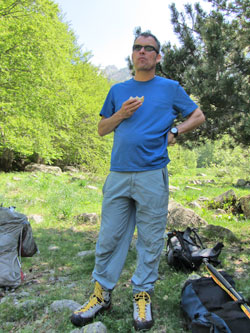


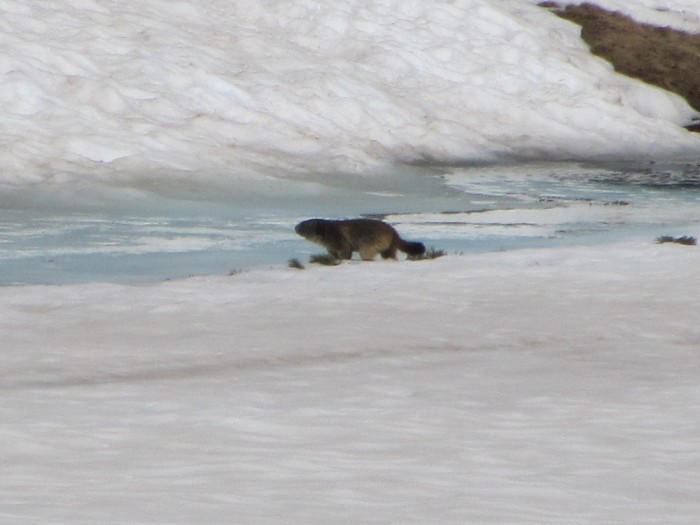
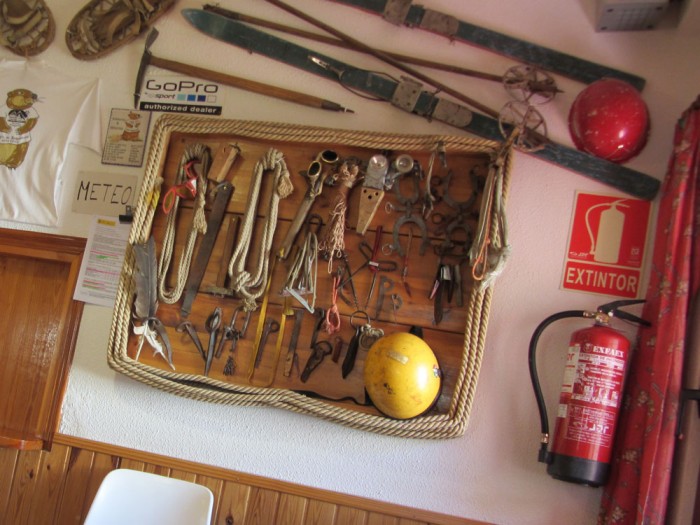



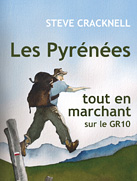
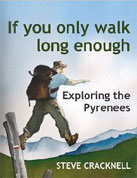

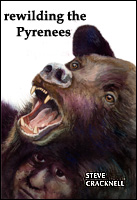



Footprints on the mountains